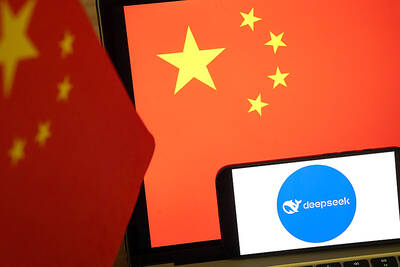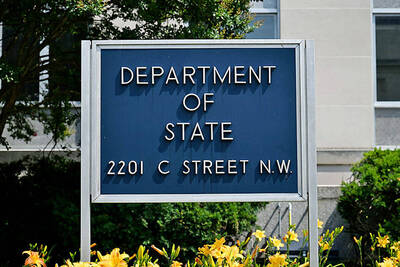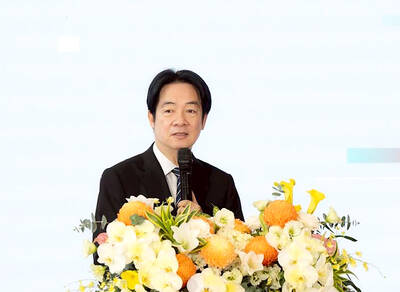New Zealand's central bank took markets by surprise yesterday, raising its key interest rate to a record high 8 percent from 7.75 percent in a move to curb inflation.
The Reserve Bank cited strong domestic demand, a buoyant house market, strong employment and investment intentions, robust consumer confidence and increasing government spending as pressures toward inflation.
Yesterday's 25-basis-point hike in the Official Cash Rate was the central bank's third so far this year, with the 8 percent rate the highest since the benchmark rate was introduced in March 1999.
The bank said it was aiming to ensure that inflation remains within a 1 percent to 3 percent range over the medium term.
"Had we not increased the OCR this year, it is likely that the inflation outlook would now be looking uncomfortably high," Reserve Bank Governor Alan Bollard said in the June Monetary Policy Statement.
New Zealand's on-year inflation eased to 2.5 percent in the three months ended March 31, from 2.6 percent in the fourth quarter. But domestic inflation, which excludes import prices, remains at an uncomfortably high 4.1 percent.
Bollard reiterated earlier comments that the New Zealand dollar is trading at exceptionally high and unjustified levels. The New Zealand dollar hit a 25-year high of US$0.7554 this week.
On Wednesday, the European Central Bank (ECB) raised borrowing costs to their highest level in nearly six years, pointing to a humming economy that, while welcome, raised the risk of higher inflation. It also hinted at additional increases, prompting a slide in European stock markets.
The ECB lifted its benchmark interest rate for the 13 countries that use the euro by a quarter percentage point, to 4 percent. That was the eighth increase since December 2005, when the bank began increasing the cost of credit in advance of an economic recovery. Europe is now growing faster than the US.
Bank President Jean-Claude Trichet while declining to commit to a timetable, left little doubt that the bank saw the need for higher interest rates to ward off the threat of higher inflation.
The ECB's strategy has focused on getting ahead of what it sees as inflationary threats from energy prices, increasing bottlenecks in European production -- which allow companies to raise prices more quickly -- and rising wages, which can feed into higher consumer prices. It has also sought to curb explosive bank lending brought on by low interest rates around the world.
For now, the bank has kept inflation under firm control. On a monthly rate, it is now running at less than 2 percent, almost precisely within the bank's target.
"What we have been doing since December 2005 has served us very well," Trichet said. "We have been fully vindicated."
The ECB has wagered that a strong global economy would continue to stoke economic growth in Europe by buying its exports and that business conditions in the US would pick up as the year progressed, as the US Federal Reserve has predicted.
In the statement issued after its regular monthly meeting, the ECB slightly modified the language that it employed to describe interest rates to hint at future increases. It said that rates were "still" accommodating European economic growth, a formulation that Trichet said was an oblique way of indicating that the bank would not stop at 4 percent.

MISINFORMATION: The generated content tends to adopt China’s official stance, such as ‘Taiwan is currently governed by the Chinese central government,’ the NSB said Five China-developed artificial intelligence (AI) language models exhibit cybersecurity risks and content biases, an inspection conducted by the National Security Bureau (NSB) showed. The five AI tools are: DeepSeek, Doubao (豆包), Yiyan (文心一言), Tongyi (通義千問) and Yuanbao (騰訊元寶), the bureau said, advising people to remain vigilant to protect personal data privacy and corporate business secrets. The NSB said it, in accordance with the National Intelligence Services Act (國家情報工作法), has reviewed international cybersecurity reports and intelligence, and coordinated with the Ministry of Justice Investigation Bureau and the National Police Agency’s Criminal Investigation Bureau to conduct an inspection of China-made AI language

BOOST IN CONFIDENCE: The sale sends a clear message of support for Taiwan and dispels rumors that US President Donald Trump ‘sold out’ the nation, an expert said The US government on Thursday announced a possible sale to Taiwan of fighter jet parts, which was estimated to cost about US$330 million, in a move that an expert said “sends a clear message of support for Taiwan” amid fears that Washington might be wavering in its attitude toward Taipei. It was the first announcement of an arms sale to Taiwan since US President Donald Trump returned to the White House earlier this year. The proposed package includes non-standard components, spare and repair parts, consumables and accessories, as well repair and return support for the F-16, C-130 and Indigenous Defense Fighter aircraft,

CHECKING BOUNDARIES: China wants to disrupt solidarity among democracies and test their red lines, but it is instead pushing nations to become more united, an expert said The US Department of State on Friday expressed deep concern over a Chinese public security agency’s investigation into Legislator Puma Shen (沈伯洋) for “secession.” “China’s actions threaten free speech and erode norms that have underpinned the cross-strait ‘status quo’ for decades,” a US Department of State spokesperson said. The Chongqing Municipal Public Security Bureau late last month listed Shen as “wanted” and launched an investigation into alleged “secession-related” criminal activities, including his founding of the Kuma Academy, a civil defense organization that prepares people for an invasion by China. The spokesperson said that the US was “deeply concerned” about the bureau investigating Shen

‘TROUBLEMAKER’: Most countries believe that it is China — rather than Taiwan — that is undermining regional peace and stability with its coercive tactics, the president said China should restrain itself and refrain from being a troublemaker that sabotages peace and stability in the Indo-Pacific region, President William Lai (賴清德) said yesterday. Lai made the remarks after China Coast Guard vessels sailed into disputed waters off the Senkaku Islands — known as the Diaoyutai Islands (釣魚台) in Taiwan — following a remark Japanese Prime Minister Sanae Takaichi made regarding Taiwan. Takaichi during a parliamentary session on Nov. 7 said that a “Taiwan contingency” involving a Chinese naval blockade could qualify as a “survival-threatening situation” for Japan, and trigger Tokyo’s deployment of its military for defense. Asked about the escalating tensions